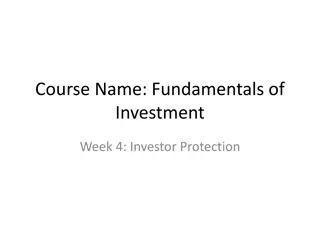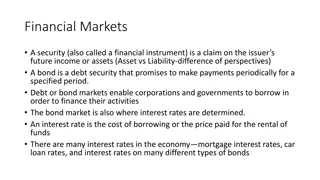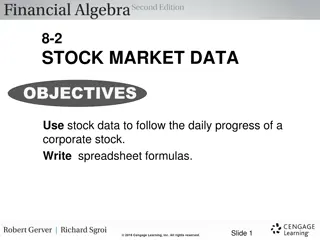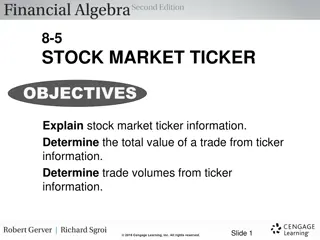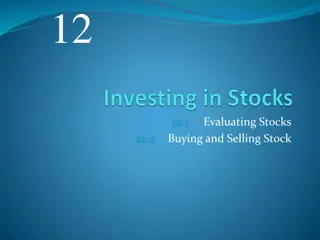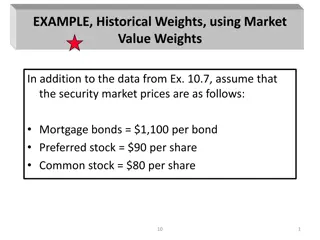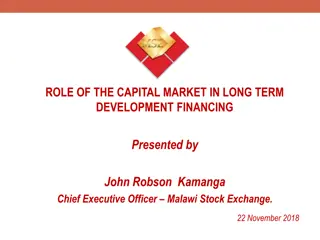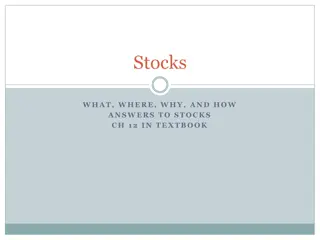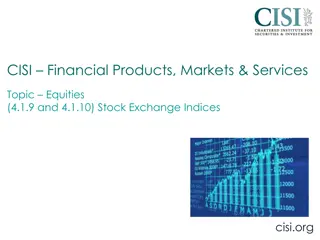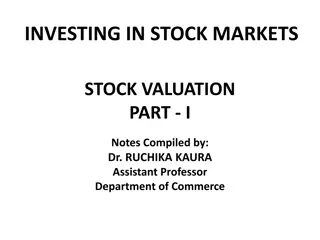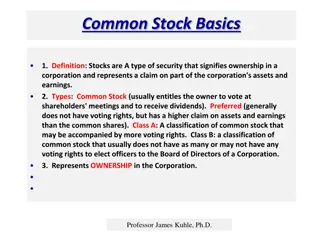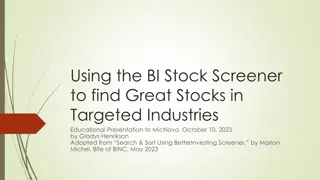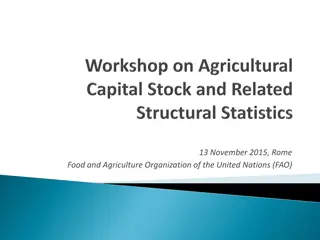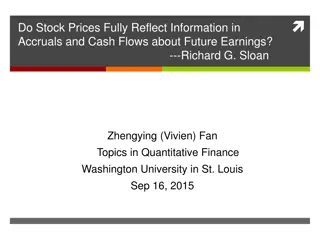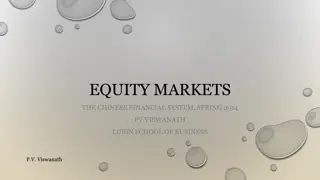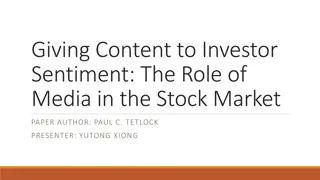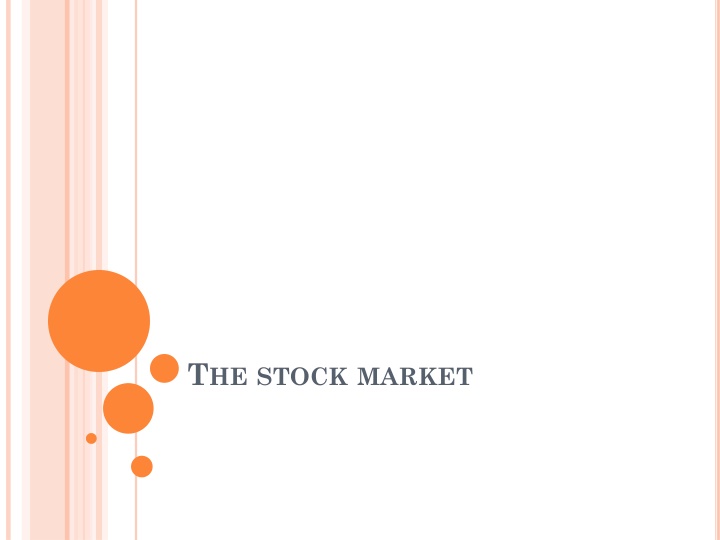
Understanding Stock Market Basics
Learn about investing in stocks, different types of stocks such as common and preferred stock, how stock returns work, and how stocks are sold. Explore topics like Exchange Traded Funds, asset valuation, and computing stock prices in this comprehensive guide to the stock market.
Download Presentation

Please find below an Image/Link to download the presentation.
The content on the website is provided AS IS for your information and personal use only. It may not be sold, licensed, or shared on other websites without obtaining consent from the author. If you encounter any issues during the download, it is possible that the publisher has removed the file from their server.
You are allowed to download the files provided on this website for personal or commercial use, subject to the condition that they are used lawfully. All files are the property of their respective owners.
The content on the website is provided AS IS for your information and personal use only. It may not be sold, licensed, or shared on other websites without obtaining consent from the author.
E N D
Presentation Transcript
INVESTING IN STOCKS Represents ownership Stockholder owns a percentage of interest in firm, consistent with the outstanding stock held
INVESTING IN STOCKS Returns consist of: 1. Dividends 2. Capital gains, the difference between sale price and purchase price Returns are not guaranteed
INVESTING IN STOCKS Stock does not mature Residual claimant Right to vote There may be different classes of common stock carrying difference distribution of dividends or voting rights either in
COMMON STOCK VS. PREFERRED STOCK Preferred stock ownership interest like common stock But carries a fixed rate of dividend like bonds Prices are relatively stable because of fixed dividends unlike common stock
COMMON STOCK VS. PREFERRED STOCK Do not carry voting rights unless firm defaults dividend payments Priority over claim on asset after bond holders but before common stock holders Dividends are not tax deductible like common stock dividends
HOW ARE STOCK SOLD Organized stock exchanges Over the counter markets Electronic communication networks
EXCHANGE TRADED FUNDS 1. They are listed and traded as individual stocks on a stock exchange. 2. They are indexed rather than actively managed 3. Their value is based on the underlying net asset value of the stocks held in the index basket. The exact content of the basket is public so that intraday arbitrage keeps the ETF price close to the implied value.
COMPUTING THE VALUE OF ANY ASSET Computing the value today of all cash flows the investment will generate over its life
COMPUTING THE PRICE OF COMMON STOCK Value in today s dollars of all future cash flows
ONE PERIOD VALUATION MODEL ?1 ?1 (1+??)+ ?0= (1+??) P0= current price of the stock D1= dividend paid at the end of year 1 P1= price at the end of year 1 ke= required return on investments in equity
GENERALIZED DIVIDEND VALUATION MODEL ?? ?0= ?=1 1+??? Infinite stream of dividends to be discounted
GORDON GROWTH MODEL P0= D1/ (ke-g) 1. Dividends are assumed to continue growing at a constant rate forever 2. The growth rate is assumed to be less than the required return on equity
PRICE EARNINGS VALUATION MODEL Price-earnings ratio measures how much market is willing to pay for $1 of earnings of the firm A high PE has two interpretations: 1. A higher-than-average PE may mean that the market expects earnings to rise in the future. This would return the PE to a more normal level. 2. A high PE may alternatively indicate that the market feels the firm s earnings are very low risk and is therefore willing to pay a premium for them.
PRICE EARNINGS VALUATION MODEL P0= ? ? E
HOW MARKET SETS SECURITY PRICES 1. Price is set by the buyer willing to pay the highest price. necessarily the highest price the asset could fetch, but it is incrementally greater than what any other buyer is willing to pay The price is not 2. Market price will be set by the buyer who can take best advantage of the asset.
HOW MARKET SETS SECURITY PRICES 3. Superior information about an asset can increase its value by reducing its risk
ERRORS IN VALUATION Problems in estimating growth Problems with estimating risk Problems with forecasting dividends




